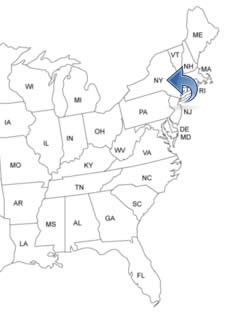NEW YORK PEOPLE SEARCH!
- ✔ Contact Info
- ✔ Phone Numbers
- ✔ Criminal Records
- ✔ Income Info
- ✔ Neighbors
- ✔ People's Age
- ✔ Property Ownership
- ✔ And Much More
Rochester, New York
Rochester is located in the western part and is the third largest city in the U.S. State of New York. The Flour City. The Flower City. Rochester is known as Kodak and Xerox Town, the birthplace of amateur photography. It was the first boomtowns in the USA and the site of many flour mills. Rochester is ranked in the top ten as the most livable city and as the best place to raise a family.
To See And To Do In Rochester
- Genesee River Gorge And The Three waterfalls
- High Falls Visitor Center
- Charlotte-Genesee Lighthouse
- Genesee Valley Park
- Highland Park
- Strong National Museum of Play
- George Eastman House
- Lamberton Conservatory
- Seneca Park Zoo
- Memorial Art Gallery
- Strasenburgh Planetarium
- Susan B. Anthony Museum & House
- Rochester & Genesee Valley Railroad Museum
- Golf
- Ontario Beach Park
- Rochester Contemporary Art Center
- Geva Theatre Center
History Of Rochester - Timeline
In 1679, the first building for Christian worship in the Rochester area was built. In 1788, the land was bought from the Seneca Indians and in 1789, the frontiersman Ebenezer Allan built a gristmill and became the first resident of what would eventually become Rochester. In 1790, the first permanent settlers arrived. In 1791, Ebenezer Allan left. More families came in 1792 and settled in the area.
In 1803, the soldier and land speculator Nathaniel Rochester purchased the land. In 1811, Nathaniel Rochester began the process of establishing a town. He laid out streets and established plots of land for municipal, church, and business use and he began to offer the plots for sale and named the settlement to Rochesterville after himself.
In 1815, the first shipment of flour was sent from Rochester. Rochester would later lead the world in the production and export of flour. In 1817, the village of Rochesterville was incorporated. In 1823, Rochesterville had 2,500 residents and the Village of Rochesterville became known as Rochester.
In 1824, the Bank of Rochester was incorporated. In 1825, the Erie Canal officially opened and the waterway connected Buffalo to Albany, cutting directly through Rochester on the way. It had a dramatic effect on Rochester, helping to transform it into America's first boomtown, sudden and rapid population and economic growth.
In 1828, the postmaster Abelard Reynolds built the city's first indoor shopping mall. The Reynolds Arcade contained 86 rooms and housed as 42 businesses. In 1831, Rochester was serviced by 16 stagecoach lines.
In 1834, Rochester became a city. In 1837, the railroad went through Rochester. In 1838, Rochester was the largest flour-producing city in the USA. In 1847, Frederick Douglass, a social reformer, orator, writer, and statesman, founded the abolitionist newspaper The North Star in Rochester.
In 1848, the Rochester Gas Light Company opened. In 1850, the University of Rochester opened. In 1856, the first Police Chief was hired. In 1857, the first public high school opened and the telegraph worked in the city. In 1858, a fire destroys 20 stores and Rochester established a professional fire department.
In 1859, Gas street lamps were erected on the streets. In 1860, George Eastman moved to Rochester with his mother and father. George Eastman was an American innovator and entrepreneur. In 1864, Rochester City Hospital opened.
In 1877, the longest working telephone line in the world runs from Rochester to Hemlock Lake. In 1879, according to the phone book lists, 400 people had telephones in Rochester. In 1882, the streets had electric street lights. In 1884, Eastman invented the roll film that the Kodak camera would use.
In 1888, George Eastman put the first simple camera into the hands of a world of consumers. In 1892, he established the Eastman Kodak Company in Rochester. In 1899, Helen Barrett Montgomery became the first woman elected to public office in Rochester.
In 1906, the Xerox company was founded. In 1914, The Clinton movie theater opened. In 1922, the Rochester Times-Union newspaper began radio broadcasting. In 1949, the city's first television station, WHAM-TV, began its broadcasting. In 1964, four people died and 350 people were injured during a race riot. More than 800, mostly blacks, were arrested.

